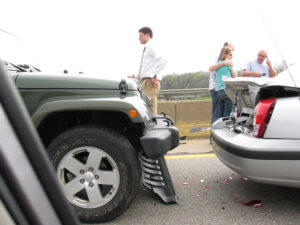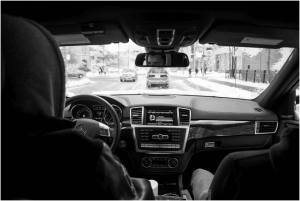The number of stand-alone vehicles on California’s streets has more than doubled.
As automakers and large technology companies compete against new low-profile companies to test their driverless cars.
The two new permits issued by the California Department of Motor Vehicles (DMV) for self-drive testing have raised the total number of companies authorized to drive their state-of-the-art vehicle prototypes to 27.
This figure is more than twice as much as in 2015.
Since by the beginning of said year there were only seven, according to the state’s automotive regulatory body.
Benefits of Self-Driving Cars
- They work – almost without errors
The technology being developed to have autonomous cars is so complicated that it includes all sorts of considerations, such as speed, how other vehicles are behaving.
Also the distance between various objects around it, and even the current location in the world.
All this is so accurate that there should virtually be no errors when the systems are running at 100%.
- Farewell to traffic
The traffic is nothing more than a problem created by too many cars that are on the streets.
With vehicles that drive themselves you will not even have to use traffic signs because everyone will be communicating with each other, and therefore, traffic might be much better.
The idea would be to drive at a lower speed, but with a better coordination among all vehicles, in order to avoid traffic jams.

Problems With Self-Driving Cars
- Expensive
Of course, right now, having a driverless car would be a costly expense, only affordable to the rich.
But like all technology, it is most likely to become cheaper over time and as they become available to the public.
However, we will most likely have to wait a few years.
- Problems with the code
Yes, standalone cars should work without any problems, but the reality is that all scheduled systems may stop working or have errors in their code.
This is already annoying if it, for example, just happens on a smartphone; in the case of cars, this could have the potential to cause major traffic accidents.
- Total loss of privacy
If the car you use needs real-time satellites to operate, this obviously has the potential for any third party knowing exactly where you are at any time.
This is potentially dangerous because you will not have privacy at all.
Companies developing self-driving cars would try to avoid this invasion of privacy, but the location data of thousands of people will be available for malicious third parties to obtain.

Popular Features of Self-Driving Cars
- No worries about parking
In all big cities there are always problems when getting a parking spot.
With driverless cars this would not be a big problem because they would not need a driver.
So, people using them could get off at their destination and the car would just keep looking for a place to park all by itself, or even take a few turns arount the block in the meantime.
- Vehicles with new designs and more power
Car designs could change radically, so much so that they could become unrecognizable.
This could also make the redesigned engine become more powerful when needed.
On the other hand, they could become entertainment centers where people can relax while waiting to reach their destination.
Flying cars
A flying car is a generic name given to any domestic vehicle that is capable of transporting people either by flying or levitating.
In terms of mobility, lately, the focus of attention has been placed on the autonomous car.
But some time ago, the idea of the supersonic car took flight again when The New York Times unveiled the Kitty Hawk, a Silicon Valley company sponsored by Google co-founder Larry Page.
Their device is capable of carrying only one person, driven by eight noisy engines that allow it to rise and land like a helicopter.
The experience is similar to that of using a jet ski, with the difference that it flew 4.5 meters above a lake in California.
Uber also revealed recently that in 2020 they will make their first tests with flying taxis.
On April 20, 2017, in Monaco, the Slovenian company Airmobil unveiled its prototype that will cost one million dollars.
And in March of the same year, in Geneva, Airbus announced the Pop.Up, a multimodal electric vehicle that will begin testing at the end of the year and that will be able to fly or move on the streets.
The government of Dubai, allied with the Chinese company Ehang, announced that they will have their taxis in the air by July.
In total, more than 13 companies are currently working in the world to produce this new phenomenon.
Even though they present different concepts, some flying solo, and others to go both on air and land, everything suggests that they will be in service sooner than imagined.
How Will Driverless Cars Affect the Economy?
Experts predict that with autonomous vehicles, the insurance situation will change completely.
Individuals will not be insured, instead, it will be vehicles and manufacturers.
And in respect to buying a car for personal use, experts say there will be those who want to continue owning a car, but many others will prefer to pay in this case for a car service.
Experts call this model “Mobility Service”, which would be a type of subscription service that will allow you to change cars with more flexibility.
But the biggest paradigm shift will come when people question the need to have their own car.
At that point, the automotive economy will collapse, because it is built to build a car that you will buy and insure, and then will also charge you for parking, gas, and maintenance, as well as offering accessories that you also have to pay.
Experts say that this will happen faster than what most believe.
“The investment companies are making is huge and those who first came with the new technology will have an advantage.
We will be in that scenario in three or five years, but we still have to deal with legislation.”
Which Brands are Working on Driverless Cars?
The newest entrants to this increasingly crowded market are Uber – whose test cars were expelled from the streets of San Francisco in December 2016.
After initially refusing to seek DMV approval – and PlusAI, a new company of 15 people with headquarters in California and Beijing, whose existence until now was almost unknown.
In May 2017, Renovo Motors, a Silicon Valley-based company that is developing “automated on-demand mobility” (AMoD), and Navya, the French creator of an autonomous electric ferry, were approved by the DMV.
Currently, according to the DMV, of the total of 180 autonomous cars on the streets of the California, some 77 belong to Waymo of Alphabet, which, being the third company to enroll in the state test program, has long maintained the largest fleet of autonomous vehicles.
Excluding those belonging to Google’s former driverless car project, the number of stand-alone cars that have been allowed to test in California has increased more than eightfold since 2014.
Tesla is also making an effort to find a spot in the driverless cars market, by adding an option of “autonomous-driving” to all of their vehicles, which would allow the driver to engage in other activities while their car drives itself towards the desired destination.
How much is your case worth?
Get a free case evaluation